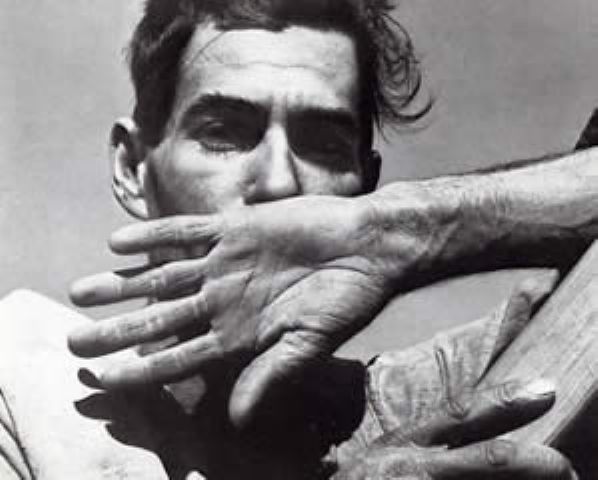Dorothea Lange (1895-1965) has been called the greatest American documentary photographer. She is best known for her chronicles of the Great Depression and for her photographs of migratory farm workers. Below are pre-World War II photographs, taken for the U.S. Farm Security Administration (FSA), investigating living conditions of families hired to work in cotton fields and farms in Arizona and California. Many of the families had fled the Dust Bowl, the lengthy drought which devastated millions of acres of farmland in Midwestern states such as Oklahoma.

Lange was educated in photography in New York City, in a class taught by Clarence H. White. She was informally apprenticed to several New York photography studios, including that of the famed Arnold Genthe. In 1918, she moved to San Francisco, and by the following year she had opened a successful portrait studio. She lived across the bay in Berkeley for the rest of her life. In 1920, she married the noted western painter Maynard Dixon
With the onset of the Great Depression, Lange turned her camera lens from the studio to the street. Her studies of unemployed and homeless people captured the attention of local photographers and led to her employment with the federal Resettlement Administration (RA), later called the Farm Security Administration (FSA).
In December 1935, she divorced Dixon and married agricultural economist Paul Schuster Taylor, Professor of Economics at the University of California, Berkeley. Taylor educated Lange in social and political matters, and together they documented rural poverty and the exploitation of sharecroppers and migrant laborers for the next five years — Taylor interviewing and gathering economic data, Lange taking photos.
From 1935 to 1939, Lange’s work for the RA and FSA brought the plight of the poor and forgotten — particularly sharecroppers, displaced farm families, and migrant workers — to public attention. Distributed free to newspapers across the country, her poignant images became icons of the era
Lange’s best-known picture is titled “Migrant Mother.” The woman in the photo is Florence Owens Thompson.
In 1960, Lange spoke about her experience taking the photograph:
- I saw and approached the hungry and desperate mother, as if drawn by a magnet. I do not remember how I explained my presence or my camera to her, but I do remember she asked me no questions. I made five exposures, working closer and closer from the same direction. I did not ask her name or her history. She told me her age, that she was thirty-two. She said that they had been living on frozen vegetables from the surrounding fields, and birds that the children killed. She had just sold the tires from her car to buy food. There she sat in that lean-to tent with her children huddled around her, and seemed to know that my pictures might help her, and so she helped me. There was a sort of equality about it.


-

- In 1941, Lange was awarded a Guggenheim Fellowship for excellence in photography. After the attack on Pearl Harbor, she gave up the prestigious award to record the forced evacuation of Japanese Americans to relocation camps, on assignment for the War Relocation Authority (WRA). She covered the rounding up of Japanese Americans and their internment in relocation camps, highlighting Manzanar, the first of the permanent internment camps. To many observers, her photograph of Japanese-American children pledging allegiance to the flag shortly before they were sent to internment camps is a haunting reminder of this policy of detaining people without charging them with any crime or affording them any appeal.
Her images were so obviously critical that the Army impounded them. Today her photographs of the internment are available in the National Archives on the website of the Still Photographs Division, and at the Bancroft Library of the University of California, Berkeley.

Dorothea Lange (May 26, 1895 – October 11, 1965)









Pingback: Today’s Birthday: Dorothea Lange (1895) | euzicasa
Pingback: Seeing Pictures – a course in Composition In Photography « Oxford School of Photography
Pingback: 1000 photography links, tutorials, photographers, new camera reviews – posts « Oxford School of Photography
Pingback: 1930s ‘Killed’ photographs The American Great Depression — excised. | Oxford School of Photography